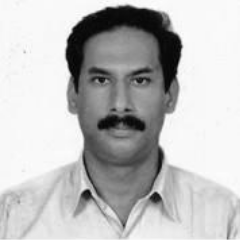
Raghotham Reddy Ganta
Work place: Department of ECE, Kakatiya Institute of Technology and Science, Warangal, 506015, India
E-mail: grrece9@gmail.com
Website:
Research Interests: Image Compression, Image Manipulation, Image Processing
Biography
Ganta Raghotham Reddy received his Bachelor of engineering degree in Electronics & Communications from Gulbarga University, He obtained his M. Tech in Digital Communication Engineering from Maulana Azad National Institute of Technology (MANIT), Bhopal. Currently an Professor and head in the department of Electronics and Communication Engineering, Kakatiya Institute of Technology and Science (KITS), Warangal, A.P. India. He is obtained his PhD from Osmania University College of Engineering, Osmania University, and Hyderabad. He published 35 international journals and conferences across the world. His areas of research include Image and Signal processing. He is Member of IEEE, IETE and ISTE.
Author Articles
Segmentation of Soft Tissues and Tumors from Biomedical Images using Optimized K-Means Clustering via Level Set formulation
By Ramudu Kama Kalyani Chinegaram Ranga Babu Tummala Raghotham Reddy Ganta
DOI: https://doi.org/10.5815/ijisa.2019.09.03, Pub. Date: 8 Sep. 2019
Biomedical Image-segmentation is one of the ways towards removing an area of attentiveness by making various segments of an image. The segmentation of biomedical images is considered as one of the challenging tasks in many clinical applications due to poor illuminations, intensity inhomogeneity and noise. In this paper, we propose a new segmentation method which is called Optimized K-Means Clustering via Level Set Formulation. The proposed method diversified into two stages for efficient segmentation of soft tissues and tumor’s from MRI brain Scans Images, which is called pre-processing and post-processing. In the first stage, a hybrid approach is considered as pre-processing is called Optimized K-Means Clustering which is the combined approach of Particle Swarm Optimization (PSO) as well as K-Means Clustering for improve the clustering efficiency. We choose the ‘optimal’ cluster centers by Particle Swarm Optimization (PSO) algorithm for improving the clustering efficiency. During the process of pre-processing, these segmentation results suffer from few drawbacks such as outliers, edge and boundary leakage problems. In this regard, post-processing is necessary to minimize the obstacles, so we are implementing pre-processing results by using level-set method for smoothed and accurate segmentation of regions from biomedical images such as MRI brain images over existing level set methods.
[...] Read more.Other Articles
Subscribe to receive issue release notifications and newsletters from MECS Press journals